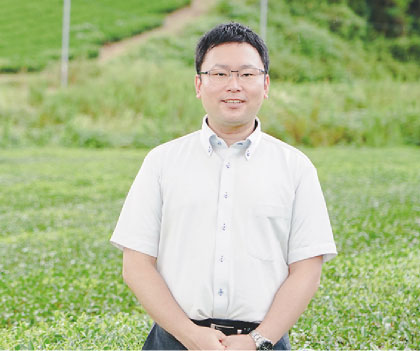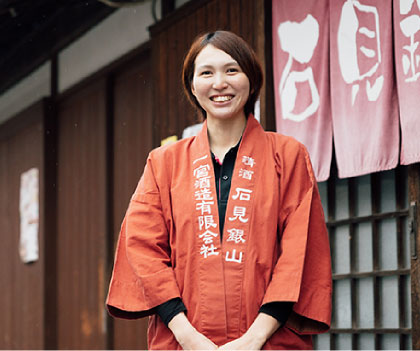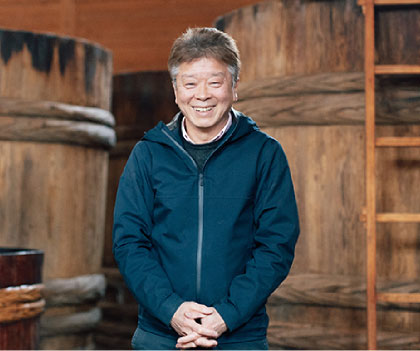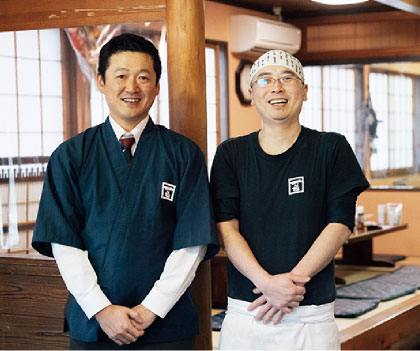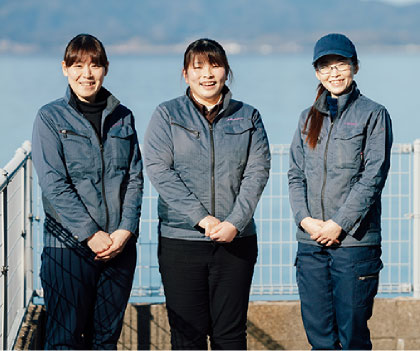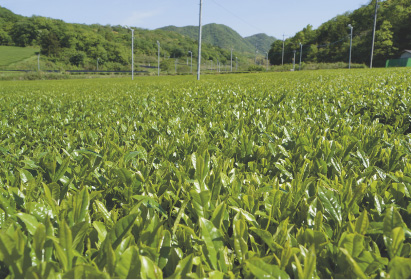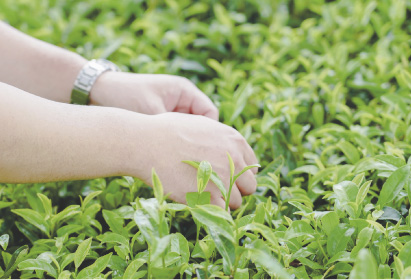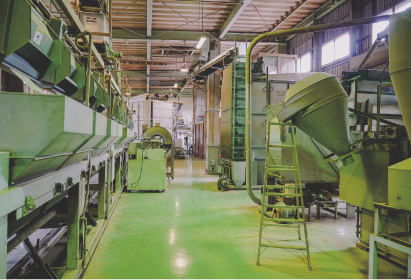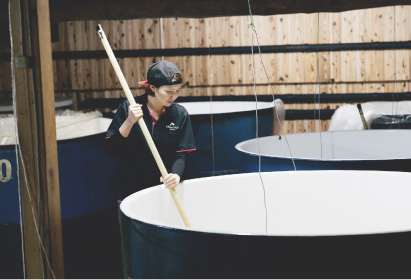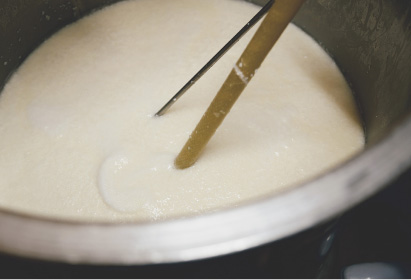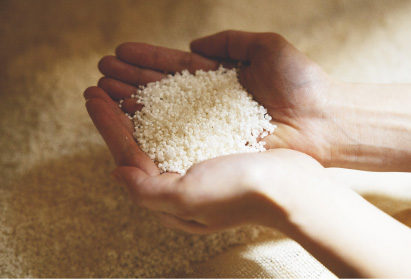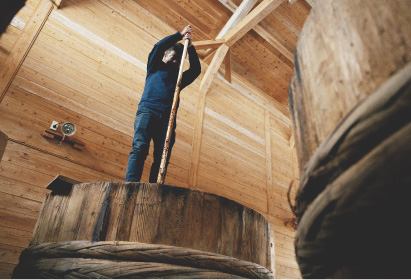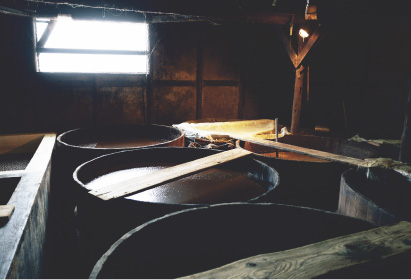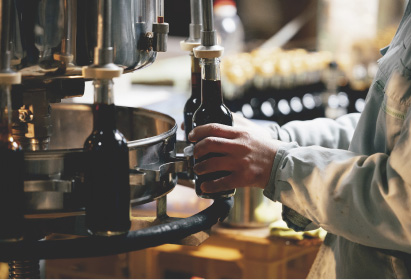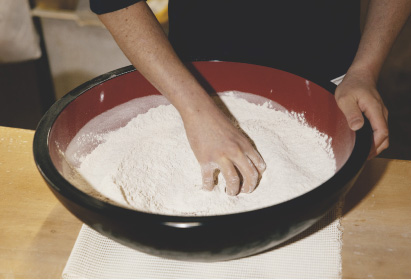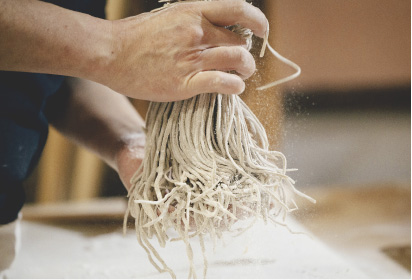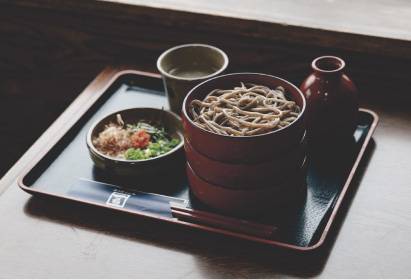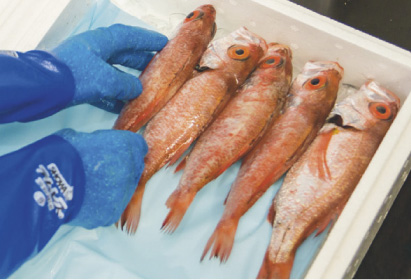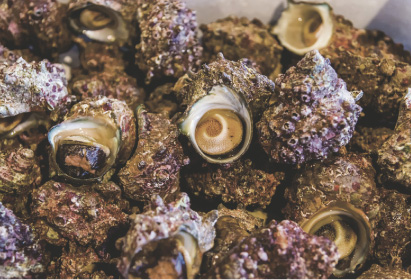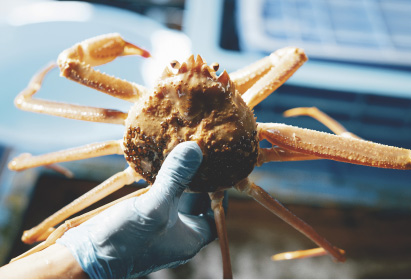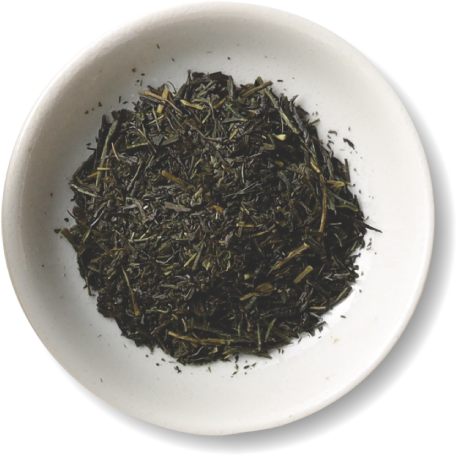
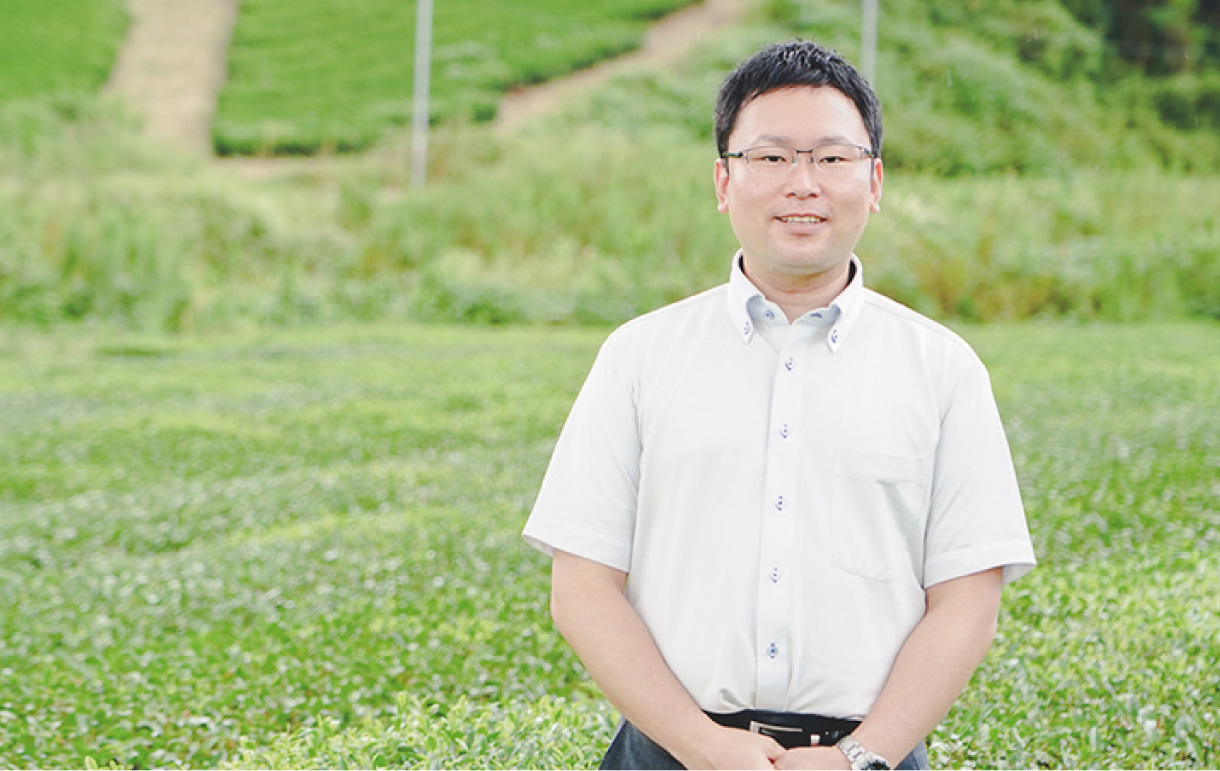
Tousuien
Matcha and sencha are becoming increasingly popular in Western countries. Matcha tea is made from powdered tea leaves. In the Matsue region of Shimane, matcha tea has been enjoyed by commoners since the 18th century, typically alongside Japanese sweets. In areas outside of Shimane, such as Kyoto (one of Japan’s most famous tea areas), matcha tea is primarily used in tea ceremonies. But, in Shimane households it is casually enjoyed on a daily basis mixed with hot water in a tea cup. And is also delicious when mixed with milk or soy milk. In Shimane there are fewer hours of sunlight, which leads to the tea leaves being brightly colored and mellow in flavor.
Sencha is a tea that gets its flavor from tea leaves that have been rubbed and dried. In Shimane, farmers enjoy this popular drink during their breaks with pickled vegetables and simmered foods. The cold weather in Shimane promotes the accumulation of amino acids in the tea leaves, resulting in a tea with a strong flavor.
Tousuien has been in business for over a hundred years. Their green tea is popular overseas, and is also loved by patissiers. Their tea is grown using methods suitable for export, with as little pesticides and fertilizers as possible. The company also aims for a sustainable production to preserve the local agricultural industry.
Matcha and Sencha are high in catechins, which boost immunity, contain antibacterial properties, and promote fat loss. Since teas are easy to make, we hope many people will enjoy them.
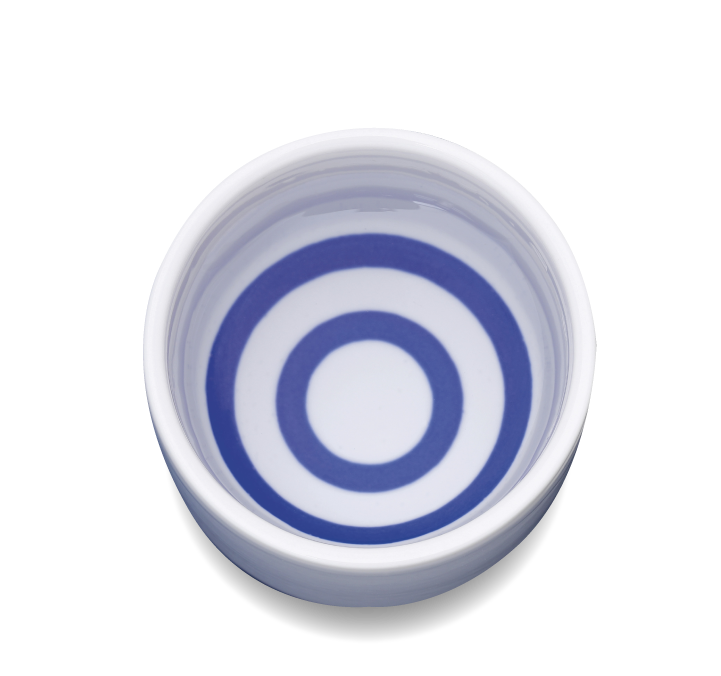
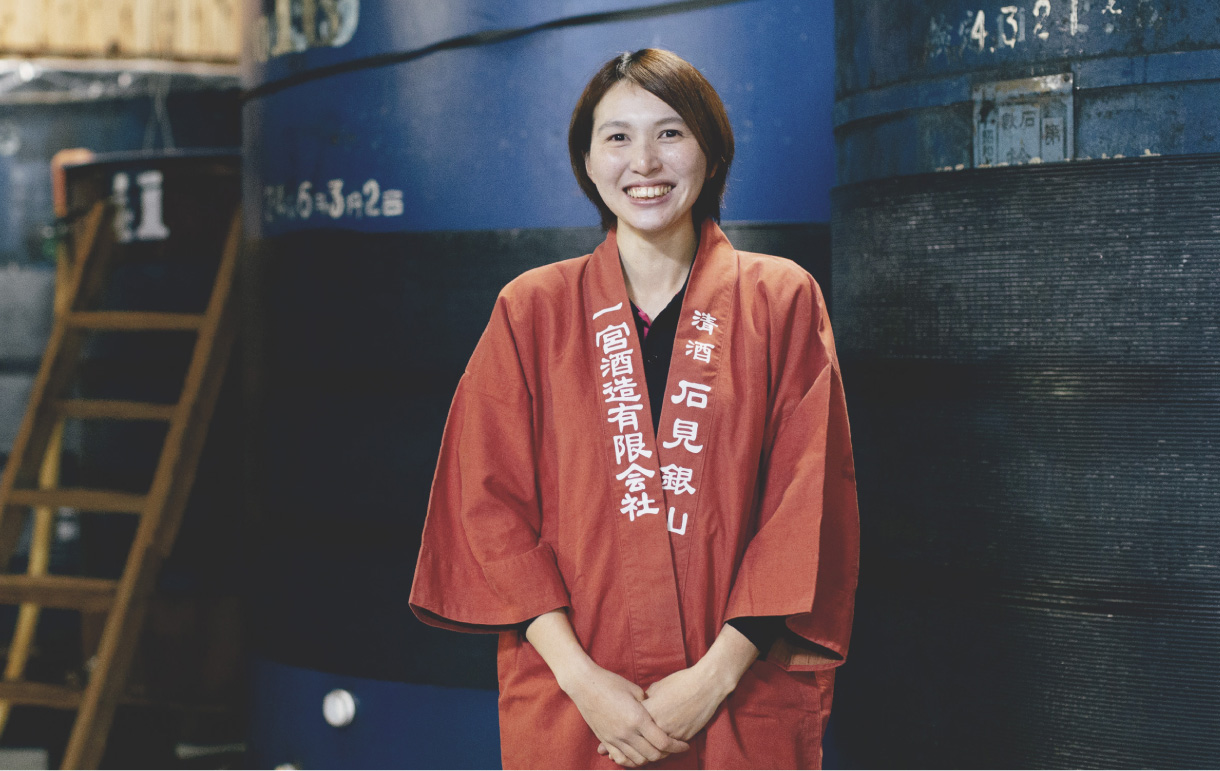
Ichinomiya Sake Brewery
Rice is an important determining factor when it comes to the character of a sake. Shimane has many mountainous areas with extreme climates, suitable for growing high quality rice. And because sake is 80% water, water is also necessary for sake production. In Shimane there are many rivers that flow with the mountain water from the Chugoku Mountains. Shimane’s delicious rice and water make it an ideal place for sake brewing.
The person in charge of brewing sake is called the Toji. In the past, Toji were seasonal workers who went to sake breweries with their men during the winter off-season. Nowadays, Toji are mostly full-time employees. Toji in Shimane prefer to use locally grown rice for its local flavor. Recently, sake brewers have been challenging themselves with creating new varieties of flavors in response to current trends. Study groups have become more common and sharing techniques have resulted in more varieties of sake flavors. We live in a time when sake tastings and food pairings have become fun ways to enjoy sake. For example, a delicate daiginjo goes well with a lighter flavor sashimi such as sea bream, while a rich junmai ginjo pairs well with the stronger flavors of simmered, smoked, or tempura foods.
Ichinomiya brews unique sake using local rice. And their female Toji has developed “gateway sakes” for young people and sake beginners, such as a lighter tasting sparkling sake and one with roses and fruits. The varieties of sake are expanding along with ways on enjoying it.
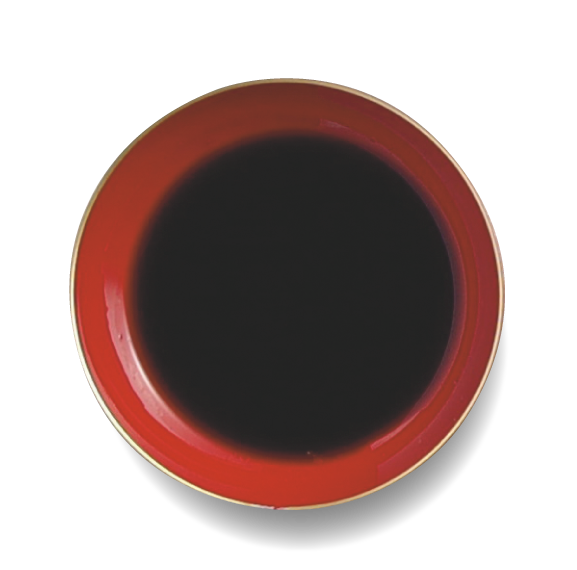
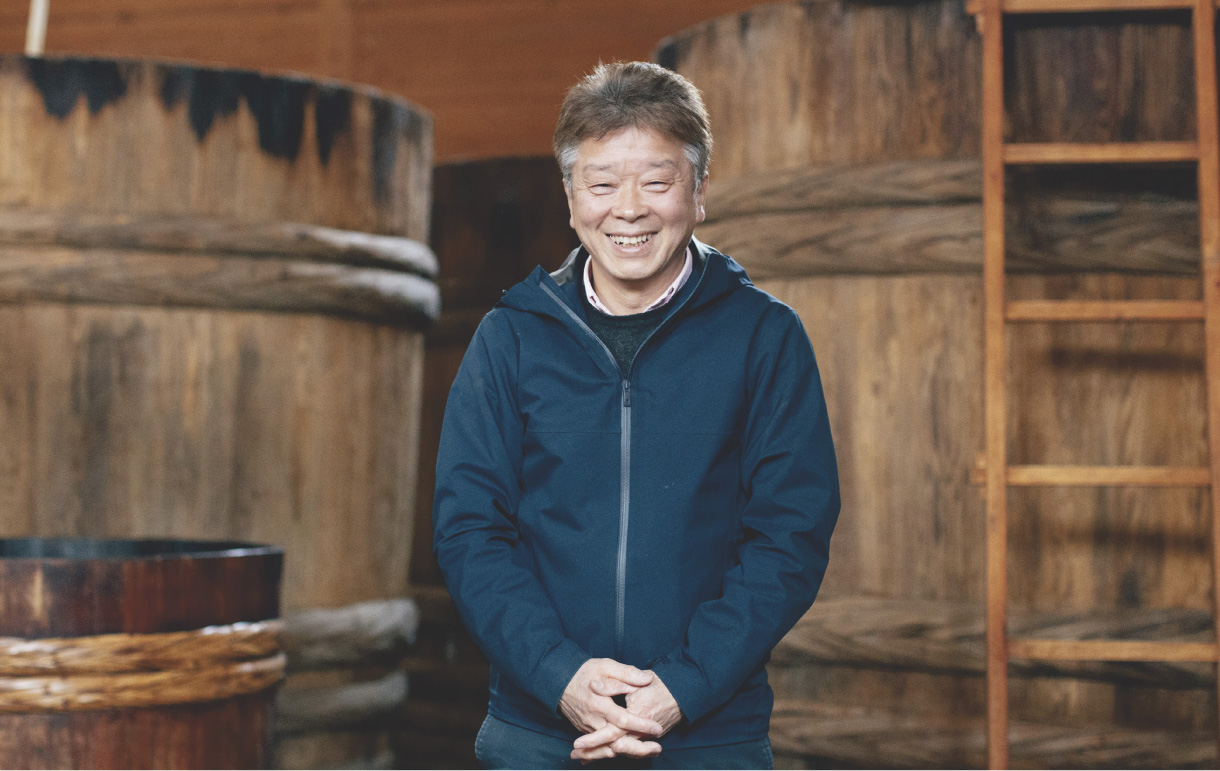
Morita Soy Sauce Brewery
Soy sauce is a traditional Japanese food that is fermented. The traditional process of making soy sauce begins with the cultivation of the koji-mold which involves a mixture of roasted wheat, steamed soybeans, and koji-mold. It takes about three days to cultivate and is then mixed with salt water to make “moromi.” The moromi mixture is then left to ferment and mature for eight to fifteen months, or two to three years in the case of long-term maturation. When the “moromi” has matured sufficiently, it is pressed and heat sterilized before becoming finished soy sauce.
The flavor of soy sauce is a complex mixture of amino acids, fatty acids, and sweet sugars. While most other major manufacturers use processed low-fat soybeans, Morita Soy Sauce uses unprocessed domestically grown soybeans, preserving their traditional flavor from when they first opened in 1903.
There are several types of soy sauce. Light soy sauce is lighter in color and dark soy sauce is darker. Both are used in Japanese cuisine depending on the dish. The “saishikomi” (twice prepared) soy sauce, which has been aged for a long time, has a richer flavor that goes well with sashimi and sushi. You can enjoy it at home by matching it with other foods too.
Traditionally, cedar vats are used to brew soy sauce, but due to the lack of successors, vat makers are on the verge of extinction. At Morita Soy Sauce, brewers and craftsmen hold study groups with young aspiring soy sauce makers, to pass on the cedar vat making techniques to the next generation of soy sauce brewers.
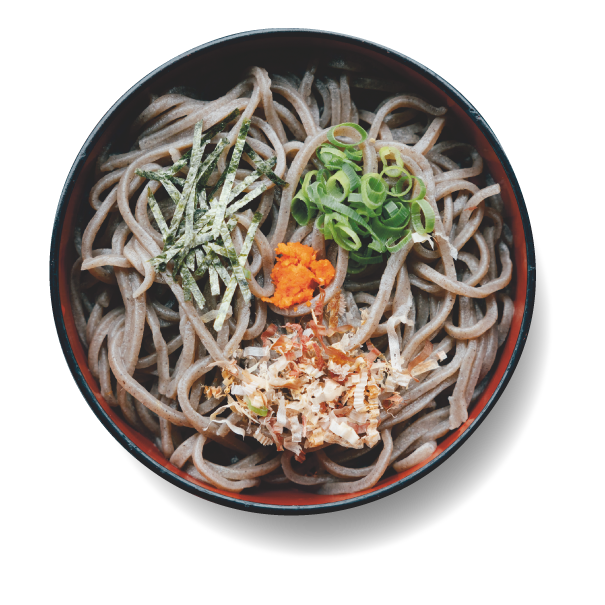
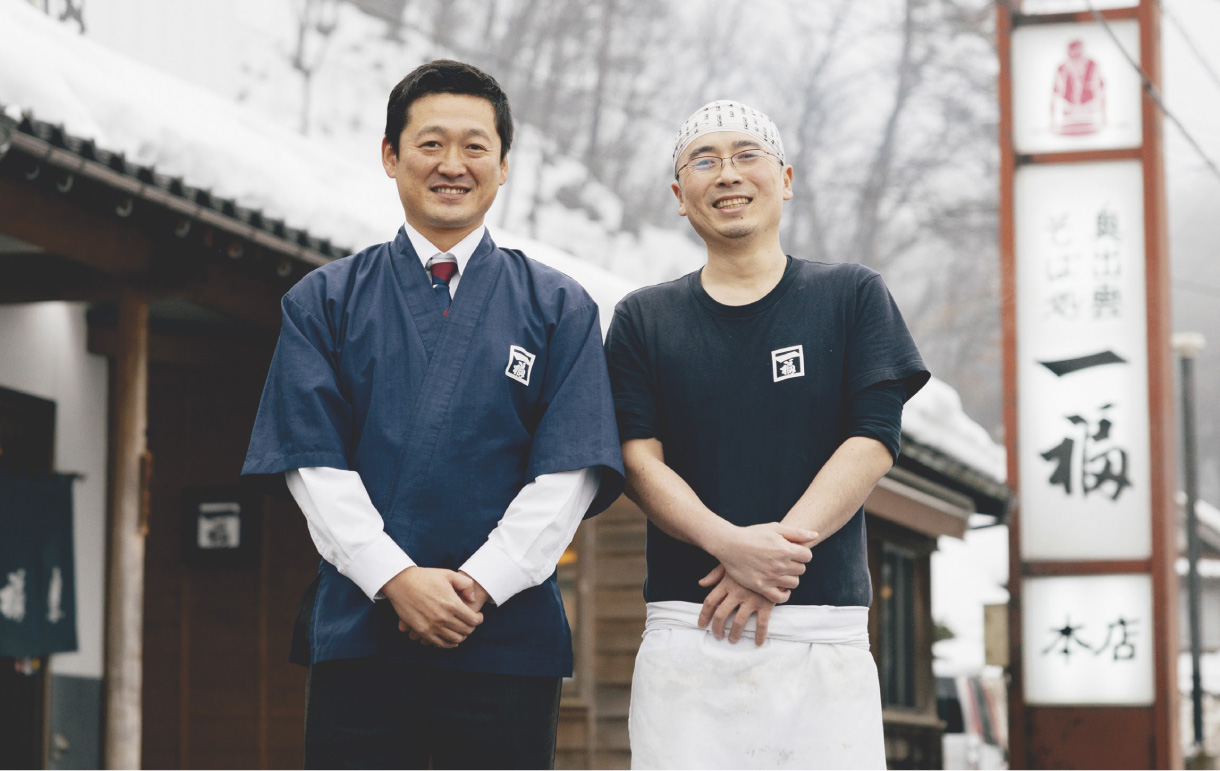
Ippuku
Soba, buckwheat, can grow even in the most barren land in a short period of time. Since the 17th century, soba noodles have been enjoyed as a fast food and even become part of the cities’ food culture. The most common way of eating soba noodles in Shimane is in the “warigo” style, which consists of three round-containers stacked on top of each other. Back in the day, the lords used square multi-tiered food boxes when they would go out hunting, but later adopted the round shape for hygienic reasons. This style is characteristic to “Izumo soba.”
Ippuku produces its noodles in-house from soba grown mainly in Iinan, located in the southern region of Shimane, and the surrounding areas. Due to Iinan’s extreme climate, the soba that grows here is very aromatic. And the “tsuyu” (dipping sauce), made to enhance the flavor of the soba, is composed of fresh kelp, spring water, and the soy sauce from a local soy sauce brewery.
Izumo soba noodles are made from soba milled without removing its thin husk, in the process called “hikigurumi.” The noodles are blackish and their wild aroma stimulates the appetite. The noodles are rich in rutin, a polyphenol, making it a favorite among health-conscious people. There are many ways to enjoy soba, such as “zaru,” where the noodles are rinsed in cold water after being boiled, or “kama-age,” where the noodles are served in the water it was boiled in. The water the noodles are boiled in is healthy and can be drunk as “soba-yu.” Buckwheat seeds are also used in teas and sweets, and are gaining attention as a healthy food for people who are concerned about their blood sugar and blood pressure.
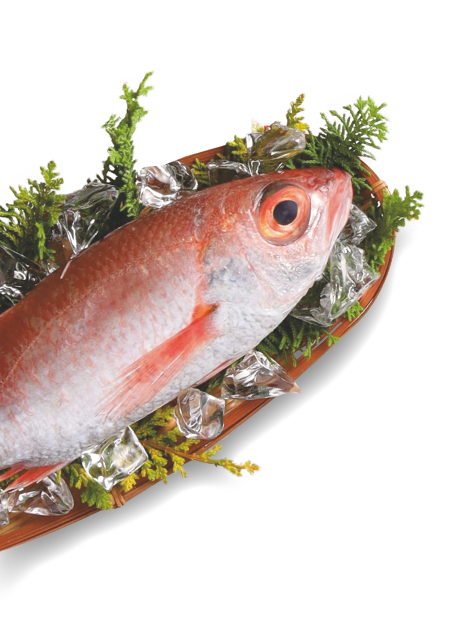
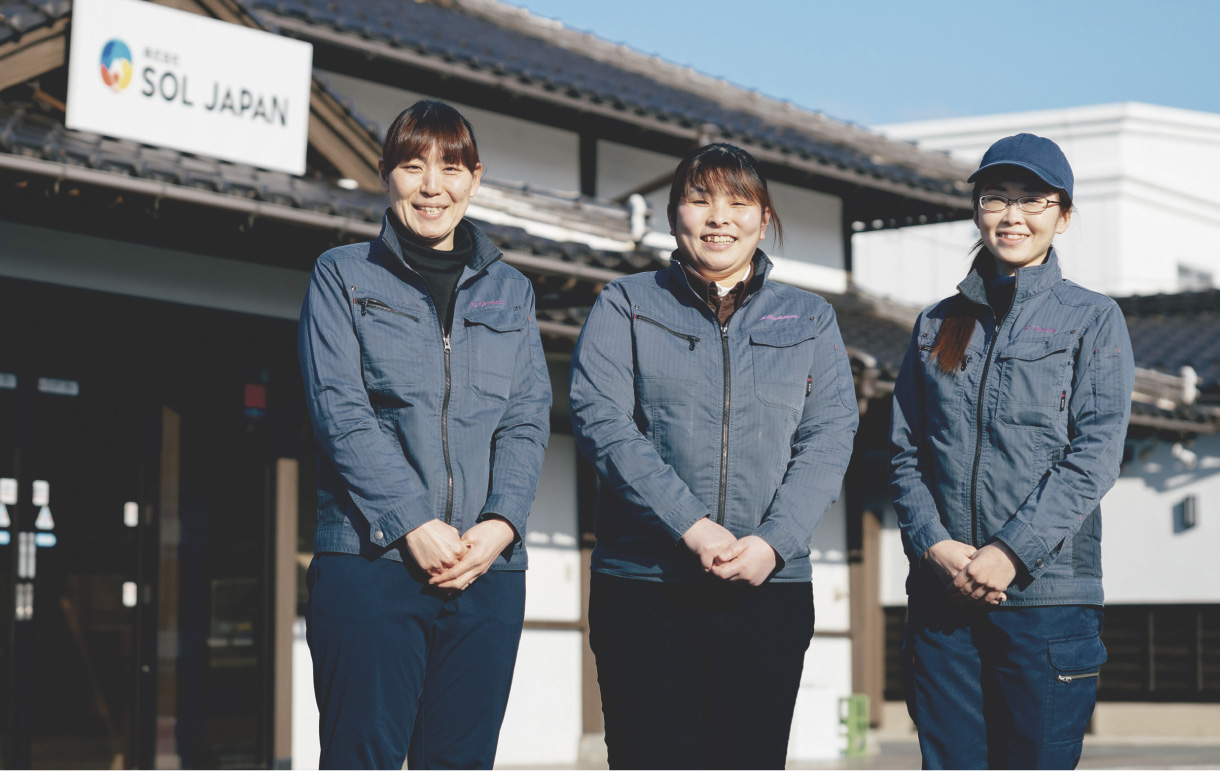
SOL JAPAN
Facing the Sea of Japan, Shimane is blessed with the rich fishing grounds where the cold Liman Current and the warm Tsushima Current mix together. Nodoguro (blackthroat seaperch), sea bream, yellowtail tuna, and tilefish can be enjoyed seasonally.
When talking about Shimane’s marine products, we have to mention the Oki Islands and Hamada City. The Oki Islands are located in clean waters that are rich in shellfish such as Japanese babylons, noble scallops, and rock oysters. Hamada City is located in the western part of Shimane and is one of the best fishing ports in Japan. Its fresh horse mackerel, nodoguro and flounder are known as the “Donchichi Brand” and enjoyed both within and outside of Shimane Prefecture.
SOL JAPAN is located in Matsue City. In the area, there are a lot of environment friendly fixed-net fishing, where nets are set in the waters 15 to 20 minutes away from the fishing port. And with the fishing port being so close to the market, varieties of fresh seafood are always available. Matsue City is also home to Lake Shinji, a brackish water lake where beloved delicacies in Japanese cuisine like eels and Japanese icefish can be caught.
At SOL JAPAN, fish and shellfish are processed and flash frozen while still fresh to preserve their flavor even when exported. And for example, sea bream is deboned and turban shells are removed from their shells, making them easily enjoyable by just having to defrost them. We hope that people around the world will enjoy the delicious seafood from Shimane.

